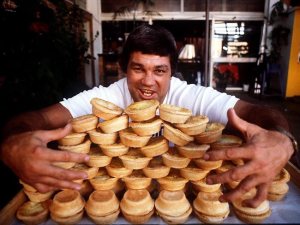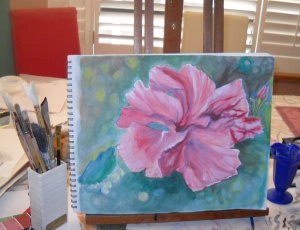Is It Selfish To Ask, Why Me?
January 20, 2014
 Tom is a life-long smoker and has no intentions of quitting just because he has emphemsyma. He has never exercised in his life, loves his fried foods and lots of it. The more we chat the less respectful he is about my self-care lifestyle. “What, you are trying to live forever?”
Tom is a life-long smoker and has no intentions of quitting just because he has emphemsyma. He has never exercised in his life, loves his fried foods and lots of it. The more we chat the less respectful he is about my self-care lifestyle. “What, you are trying to live forever?”
No, I say, but before I can finish my sentence he is in the midst of a violent coughing fit and I have to fetch his nurse. In a way he answered his own question, though I doubt if he will understand that. I do not expect to live forever. I do not even expect a normal lifespan given my condition. What I would like though would be to go gracefully and without too much fuss. To that end I take great care of my nutrition, I exercise, I try to sleep well and I meditate. I do everything within my power to ensure quality of death.
Yes, I said quality of death. We are in such denial over death that we prefer to use the term quality of life instead of what we really mean. After all, isn’t quality of life what Tom has been pursuing all his life? He has done precisely whatever made him happy, damn the consequences. “Divine decadence,” as Sally Bowles famously called it. In that iconic song of hers, Life is a cabaret, she speaks of her friend Elsie who lived fast and died young but was the happiest corpse she had ever seen.
All fine and dandy in fiction but statistical research says otherwise. People with a history of alcohol abuse, drug usage, obesity not only die sooner but worse, they have a prolonged and agonized descent into death. Then I meet Angela. As I troll the cancer wards, I see that life is never as simple as that.
Although she is one-third of Tom’s age, Angela is also undergoing the same excruciating regime of chemo as him. Her skin is a yellow-green, her bald head is wrapped in a scarf. She asks, “Why me?” It is oh so tempting to dismiss Angela as suffering from an overdose of self-pity. After all, isn’t the unspoken half of why me?: “Why not someone else?” But not so fast. Angela is a self-confessed health-nut, a semi-vegetarian, a dance teacher and so she exercises for a living, a non-smoker, a social drinker and has never used even so much as an Asprin, never mind street drugs. When Angela asks, “Why me?”, I truly have no answer.
Perhaps it is bad genes. Perhaps Angela is plain unlucky, whatever that means. I even had one young woman say to me that she believed her cancer and imminent death were the result of a curse put upon her by someone who hated her. All I can do is shrug my shoulders. Much of death, as well of life, is random, mysterious, follows no logic or reason. Oh, yes, we can weave whatever narrative we feel comfortable with but there are always far too many exceptions to ever explain away everything.
As I walk home I question why is it exactly that I do all the many things I do for my long-term good when realistically, my long-term is not going to be that long? Is it because it makes me feel pious and somehow better than others? Am I as selfish as the people who never move past “Why me?” Perhaps. I also know that my self-care increases my stamina and pain tolerance. People who practice self-care are better able to withstand extreme trauma such as bone marrow transplants or severe heart attacks.
I think at every step of life we have to make a choice: pleasure now or avoid pain later. It is rarely a clear-cut choice and often I make the wrong one, but overall I opt for the greater good because that is my nature. There is no right or wrong in that. I am no better or worse than Sally Bowles or Tom or Angela. I don’t discount there are statistical probabilities for sickness and death, but ultimately both are random. So instead of asking, Why me?, I prefer to ask, Why not me?



